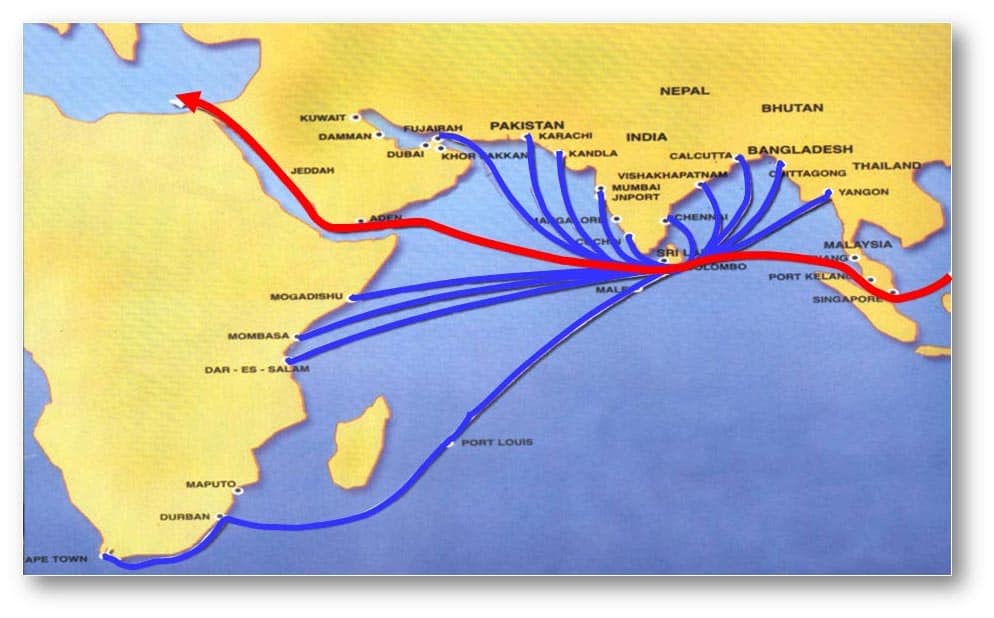Transco Cargo has a weekly sailing to Sri Lanka, and staying on top of topics with relation to Sri Lanka port activities is of import to us as well as to our valued customers. Since 2015, the framework for foreign policy has been to position the island nation in its prosperous position in the Indian Ocean towards making the Sri Lankan Port of Colombo a regional maritime and logistics hub. Now, five years since that decision, we look at whether Sri Lanka has been able to utilize the opportunities given to them and what threats are looming in terms of its Sri Lankan port transshipment hub status.
With a great geolocation advantage as a key logistics hub in the Indian Ocean, Sri Lanka has been a stopping point for maritime trade for centuries and that tradition in East-West trade routes continues. In the region of South Asia, India, Sri Lanka, Pakistan and Bangladesh are key players, whereby India owned more than half of the container throughput market, with Sri Lanka following soon after with just under a quarter. In order for Sri Lankan Port transshipment volumes to grow, it’s vital to make use of the its location between two other leading regional hubs, that of Dubai (Port of Jebel Ali) and Singaporean ports.
The four major Sri Lankan ports are located in Colombo, Galle, Hambantota and Trincomalee, with the Port of Colombo being the busiest with three operational terminals helping assist with volumes; it is an ideal transshipment hub in the region. However, the Hambantota Port has more of a strategic location due to it being closer to the Indian Ocean shipping lanes capable of handling deep-water vessels. The China owned port has been integrated with the BRI or the Belt Road Initiative and last year, in 2019, a new terminal was initiated making it one of the largest in South Asia.
However, whilst Sri Lankan ports have their advantage, the lack of infrastructural development has held back its potential with competitors in the regions (India, Dubai, and Singapore) expanding their capacities further. Jaffna and Trincomalee are also underutilised due the lack of infrastructure to carry out transshipments. Many experts feel that the Sri Lankan port policies need realigning, with recommendations made Christopher Finnigan and Inoka Perera as follows;
- Prioritising on operational facilities and digitalization
- Encouraging regional investments and bilateral agreements
- Strategising in regional port development projects
Should Sri Lankan port authorities and the government make the necessary development changes, Sri Lanka should be able to stave off threats and competition to reach its full potential as a transshipment hub.

